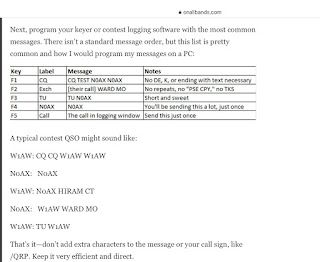Having Fun with CW
I've really learned alot about CW over the past month, exchanging QSOs in 31 states and 19 countries. One think I've noticed is most people like to ragchew, and are a bit relaxed on the CW script I was focused on memorizing when I started out.
-Use 3x2 when calling CQ. example cq cq cq de wx7v wx7v k
-Use 1x2 when answering CQ. example TheirCall de wx7v wx7v k
-Answering a cq or being answered - repeat rst, name and qts 2 times.
-Stick to the pro-signs R (Roger), BT (new thought), K (over), SK (done), ee (two bits, really done)
-Use the macros for RIG, ANT and WX only if it seems the other station is interested
-An exchange can be more meaningful by sharing one real thing
-ending a qso: fb tnx fer qso es vy 73 73 = pse qsl direct or lotw =
-Answering POTA: send your call sign, when answered use 1x2 with their rst, your qth and name
-Answering DX, just send your Call Sign, followed up by tu rst (usually 599)
-Contesting: send call sign, respond with contest rules. Eg: NAQP CW exchange blog post:




Comments